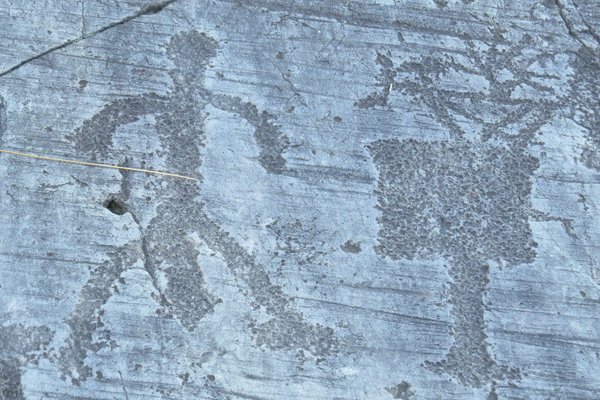Italy
Rock Drawings in Valcamonica
The Rock Drawings in Valcamonica comprise one of the world’s largest collections of prehistoric petroglyphs.
Approximately 140,000 petroglyphs were discovered in this Alpine Valley. They were created over a period of around 8,000 years, starting around 8,000 BCE by nomadic hunters. Cosmological, figurative, and cartographic motifs are featured, in some locations forming monumental hunting and ritual scenes.
Community Perspective: The petroglyphs here can be difficult to make out depending on the light. They lie spread across 6 different locations, of which Naquane in Capo di Ponte seems to be the main one; it can be visited on your own via signposted footpaths along the rocks.
Site Info
Official Information
- Full Name
- Rock Drawings in Valcamonica (ID: 94)
- Country
- Italy
- Status
-
Inscribed 1979
Site history
History of Rock Drawings in Valcamonica
- 1979: Inscribed
- Inscribed
- Type
- Cultural
- Criteria
- iii
- vi
Links
- UNESCO
- whc.unesco.org
- Official
-
- vallecamonicacultura.it — TurismoValle Camonica
- Related
-
- rupestre.net — Rupestre.net: Rock Art in the Alps - Valcamonica
All Links
UNESCO.org
- whc.unesco.org — whc.unesco.org/
Official Website
- vallecamonicacultura.it — TurismoValle Camonica
Related Resources
- rupestre.net — Rupestre.net: Rock Art in the Alps - Valcamonica
Community Information
- Community Category
- Archaeological site: Rock Art
Travel Information
Recent Connections
-
Perfect Inscriptions
1979 -
Squatting figure
"The Rock Drawings in Valcamonica in It… -
Erich von Däniken
Feature in Evidence of the Gods
Connections of Rock Drawings in Valcamonica
- Individual People
-
-
Erich von Däniken
Feature in Evidence of the Gods
-
- Geography
- Trivia
-
-
Squatting figure
"The Rock Drawings in Valcamonica in Italy is another treasure house for the squatting figure symbols, with not only a large quantity of them, but also rich variations. But on the whole, the squatting figures are scattered loosely in comparatively simple scenes." (Zuojiang Huashan Rock Art Nomination file, p. 209)
-
- History
-
-
Neolithic age
"During the Neolithic period (the 5th to 1st centuries of the 4th millennium BC approximately-5500-3300 BC[5]), agricultural practices spread in Val Camonica, correlated with the formation of the first sedentary settlements. In the field of rock art, human figures and sets of geometric elements, such as rectangles, circles, and dots, constitute the main elements of the compositions and complete the symbolic meaning of the anthropomorphical petroglyphs." (wiki)See en.wikipedia.org
-
Bronze Age
"During the Bronze Age (2nd millennium BC, approximately), engravings on rock outcrops took on the issue of weapons,.." (wiki)See en.wikipedia.org
-
Palaeolithic and Mesolithic
-
- World Heritage Process
-
-
Perfect Inscriptions
1979 -
First inscriptions
Italy 1979
-
- Human Activity
-
-
Erotic art
one of the most published images is a relation between a human figure and an animal in Capo di Ponte, Valcamonica -
Petrosomatoglyphs
Hundreds of footprints -
Petroglyphs
-
- Constructions
-
-
Stelae
Stelae at Naquane National Archaelogical Park
-
- Timeline
- WHS Hotspots
News
No news.
Recent Visitors
Visitors of Rock Drawings in Valcamonica
- Alexander Barabanov
- Alexander Lehmann
- A. Mehmet Haksever
- Ammon Watkins
- Antonio J.
- Argo
- Astraftis
- Atila Ege
- BaziFettehenne
- Bin
- Caspar
- Christoph
- Claire Bradshaw
- Cluckily
- Clyde
- Coppi
- Csaba Nováczky
- CugelVance
- Daniela Hohmann
- Daniel Chazad
- Dan Pettigrew
- David Aaronson
- David Berlanda
- Dimitar Krastev
- Dorejd
- Dwight Zehuan Xiao
- Elia Vettorato
- Els Slots
- Eva Kisgyorgy
- fabi-ddorf
- Fan Yibo
- Farinelli
- Federico P.
- Fmaiolo@yahoo.com
- GeorgeIng61
- Harry Mitsidis
- henrik_hannfors
- Hubert
- Iain Jackson
- Igloo
- Ivan Rucek
- Jakob F.
- Janina Lehmann
- Jan-Willem
- Jarek Pokrzywnicki
- Jean Lecaillon
- Jeffrey Chai
- Jens
- JobStopar
- Jonas Hagung
- Jonas Kremer
- Kbecq
- La Concy
- Lara Adler
- LaVale
- Lisu Marian
- Loic Pedras
- Luboang
- Lucas Del Puppo
- Lucio
- Luis Filipe Gaspar
- Maciej Gil
- marcel staron
- Martinacurra88
- Martina Rúčková
- MaYumin
- Mikko
- MMM
- MoPython
- Naim Y
- nan
- Nihal Ege
- Patrik
- Peter Lööv
- Petteri
- Philipp Leu
- Philipp Peterer
- Piotr Wasil
- Rafał Kałczuga
- Randi Thomsen
- Remigiusz
- Riccardo Quaranta
- Roger Ourset
- Roman Bruehwiler
- Samato
- Sergio Arjona
- Solivagant
- Stanislaw Warwas
- Stefan A. Michelfeit
- Stijn
- Svein Elias
- Szucs Tamas
- Taotao Chen
- Tarquinio_Superbo
- Thomas Buechler
- Thomas van der Walt
- tommasorossotti
- tony0001
- Traveling Girl
- triath
- Tsunami
- usagi1974
- Vanessa Buechler
- Walter
- Wojciech Fedoruk
- Xiong Wei
- Xiquinho Silva
- Yevhen Ivanovych
- Zoë Sheng
Community Reviews
Show full reviews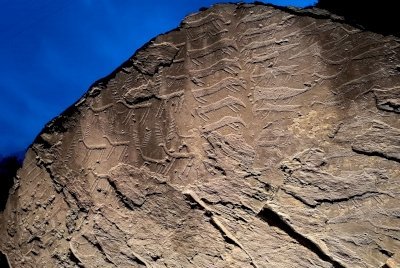
I visited this WHS in July 2019 for the first time in my life (despite of living not so far from it - about 2 hrs by car). If you have Lombardia Carta Musei, Parco Nazionale delle Incisioni Rupestri di Capo di Ponte is included in your card (otherwise, ticket is 6€). Parco Archeologico Nazionale dei Massi di Cemmo has a free entrance.
I was very lucky, since - by chance - that day there was a special night opening of Massi di Cemmo and Parco Archeologico Comunale di Seradina-Bedolina, with a guided tour with the Park director, so we could get very interesting explanations. Also, drawings are better seen with raking lights (i.e. early morning, sunset, or night with a raking lamp).
So, we started with Massi di Cemmo, they're the easiest to see, the park is in the centre of the town (I guess you can also walk there from the station), they are 2 big vertical (drawings are on the vertical side) stones so this saved them from centuries of damages from snows, people walking and so on. Then we started walking with the director and a group to the Seradina Bedolina Archeological area. He guided us to the most important rocks (big horizontal rocks, so carvings are very thin) and talked about the different carvings, he also told that carvings here have different subjects from carvings at Naquane.
Then, on Sunday morning, we went to Naquane (we walked there from our B&B, but …
Keep reading 0 comments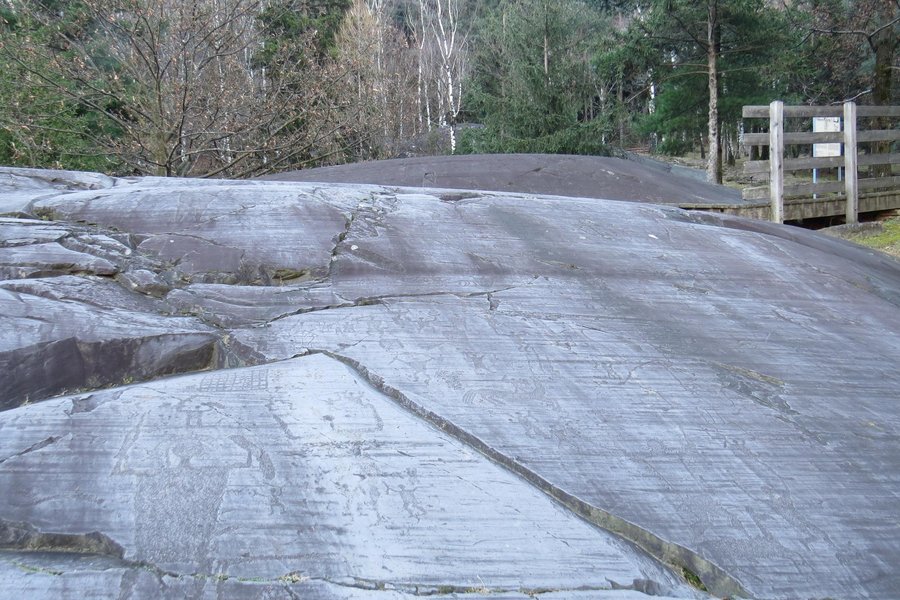
April 2016 I visited Cape di Ponte on my University research project- an ethnographhic research on the area. In January 2016, I sent an email to the centre asking to purchase a visitors brochure before I came- (EU10) and received the reply in September 2016! April 2016 i went with my husband to visit the site and was told that I could not take a monopod- could not take video, but could take photographs. I returned to the car and put back the monopod, and set the camera on photo. Despite the attendant having received all my all my ID, including viewing my Italian passport he followed us around the park to 'watch' what I did! Very uncomfortable feeling- and how sad that visiting scholars should be treated as vandals.
Keep reading 0 comments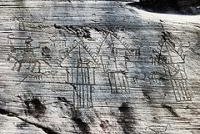
I visited this WHS in May 2014. After reading several reviews, I decided to visit the rock drawings of Naquane in Capo di Ponte. The park is open from 8:30am which was perfect to be able to check out the orange route first which takes about an hour. On a sunny day the first sun rays are visible on the most famous series of rock drawings Rock 50 and the Big Rock. There are reindeer, hunters, shovels, animals, geometric signs, hunting scenes, horses, carts, etc. Unlike the rock art I saw in Alta, Norway, the rock drawings of Valcamonica are not filled in with red ocre so the different engravings and iron tool marks are more visible in the main rock drawings. Some rock drawings are completely covered with vegetation or overgrowth or simply with mud. After the orange route which gives you a very good overview of rock drawings, another 45 min trail uphill takes you to the red route to see other rock drawings with one of the most famous being the running athlete drawing. However, an extra effort through a 35 minute downhill trail will lead you to my favourite rock drawings of Valcamonica - a series of pile dwellings - which was the next WHS I was going to visit later on.
Keep reading 0 comments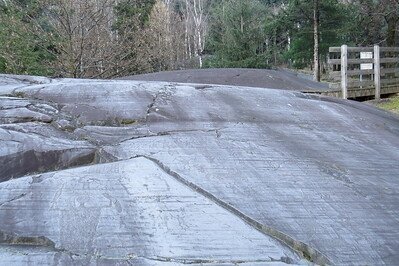
Valcamonica was my first stop on a very full day ticking off WHS in the Italian Alps. This valley lies just over an hour to the north of Brescia, and can be reached via a major road that passes numerous tunnels. I opted to visit the Naquane Park in Capo di Ponte, as it seemed to be the most worthwhile among the 6 locations. The park lies on a hill above the town, so you have to leave your car in the center (the closest parking is at the cemetery behind the train station) and walk-up. The path is signposted. It's a climb of about 15 minutes.
Of course, I was the only visitor at the gate. The park distinguishes itself among Italian attractions as it has long opening hours all through the year. It's only closed on Mondays, but otherwise, open each day from 8.30 a.m. into the late afternoon. I don't know how they handle it if there's a lot of snow - the path up and through the park would be too slippery I guess. And they would have to clear the snow from the rocks to keep the drawings visible. There's an entrance fee of 4 EUR, and I was welcomed with a leaflet in English and explanations about which route to take to see the major rock drawings.
The most impressive ones are the numbers 50 (right at the beginning) and 1 (the biggest and earliest discovered). The Camunni appear to have been …
Keep reading 0 comments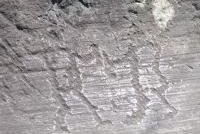
I travelled by train from Brescia to Capo di Ponte, and from the station climbed up to the park of Naquane as has been described below. Afterwards I returned to the village, crossed the river and found two further areas of rock engravings.
The Massi di Cemmo comprises two large engraved rocks in a field.
The Seradina-Bedolina area is much larger and involves much scrambling over rocks. But the engraved rocks are marked and easy to find.
Keep reading 0 comments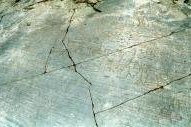
I have been once in Valcamonica, where are a prehistoric complex, realized in a period of 8000 years, extended in a 70 km long area and not yet completely explored, of 2400 rocks with 140000 engraved symbols and figures, that evoke scenes of navigation, dance, war, agriculture and magic.
I have been to the sites of Foppe di Nadro, near Ceto, in the Regional Park of the Rock Drawings of Ceto, Cimbergo and Paspardo, and to the National Park of the Rock Drawings of Naquane, founded in 1955 near Capo di Ponte as the most important in Valcamonica, 30 ha large. In Naquane are 104 engraved rocks going from the Neolithic period to the early Christian age. The most important rocks are: the Big Rock 1, the most important in the valley, with about 1000 drawings with a labyrinth, armed men, sun symbols, cult objects, foots, birds, shovels, carts, warriors, riders, priests and scenes of hunting of deers, war, weaving and women's initiations from the Neolithic period to the Iron Age, the Rock 47, with a cart with wheels drawn by ox, fighting warriors, shovels and mythological figures, the rock 50 with armed men, riders, cart constructers, boats, birds, inscriptions, foots, temples, buildings, shovels, sun symbols and scenes from the Iron Age of a sun cult, the rock 35, with a small village, a smith, a runner with a plumed headdress, scenes of duels between armed men, the rock 32 with a female initiation scene from the Eneolithic Age, the …
Keep reading 0 comments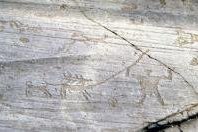
Having already visited the Scandinavian WHS Rock art sites at Tanum and Alta we didn’t want to miss the Italian site at Valcamonica during a visit to N Italy (though we still have to visit Coa Valley in Portuagl). We found information about it somewhat lacking/muddled however. The UNESCO Web site was (as usual – why don’t they have better directions/location details!) singularly uninformative about exactly where the site was and its “link” to http://www.rupestre.net/ seemed of more use to specialists/ “rock art buffs” than to passing tourists! We eventually traced the site to an area north of Brescia concentrated around the town of Capo di Ponte.
It was clear also that there were several/numerous sites in the area so we just drove there and took our chances.
On arrival in the Capo di Ponte area the first signposts led us to a museum “The Regional Reserve of Ceto-Cimbergo-Paspardo” at Nadro. On closer investigation this appeared to be a joint venture with a tour company called Kernunos Viaggi who wanted to take/guide us (at a cost!) to various nearby locations as per the museum title.
We gave up on this and followed another sign which took us to the nearby entrance of the “Parco Archeologico Nazionale delle Incisioni Rupestri di Naquane”. We found the views of the rock art at this site adequate for our purposes – though no doubt if we had given the area a whole day then trips to other locations would have yielded some interest (but …
Keep reading 0 comments
